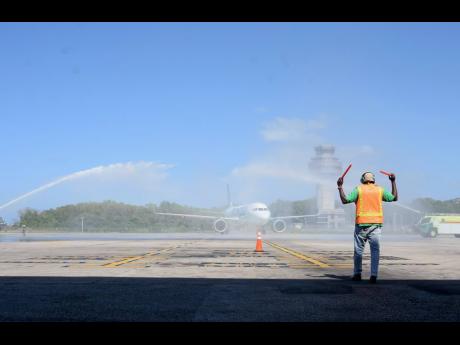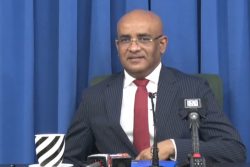(Jamaica Gleaner) The Jamaica Civil Aviation Authority, JCAA, which regulates the country’s airways, plans to ease congestion in the skies by implementing new software and systems to assist air traffic controllers.
The regulator intends to procure an ATFM or Air Traffic Flow Management system that is fully integrated and automated to generate and monitor all the elements of flights. It aims to enhance safety, efficiency and cost-effectiveness, prevent airspace congestion, and optimise flight movements, particularly as air traffic volumes continue to grow.
“The ATFM service shall be implemented for airspace where traffic demand occasionally exceeds the defined ATC capacity, within a region or defined area,” JCAA said in its tender for a provider of the ATFM.
The system will be overseen by a specialised organisation.
“This service should be managed by a dedicated ATFM organisation, supported by flow management positions established at each relevant control centre,” said the regulator.
“The service will be provided under an initial subscription period of five years, with the option to opt out of the subscription or renew annually thereafter, as deemed appropriate,” it said.
The system forms part of JCAA’s overall modernisation programme.
The core ATC, or air traffic control, facilities are based in Kingston but covers the three international airports, based in Kingston, Montego Bay, and Boscobel in St Mary.
“An ATFM system helps to manage air traffic operations in the entire Jamaica airspace,” JCAA Director General Nari Williams-Singh said.
The JCAA has conducted investigations on 22 accidents since 2000. Nine of those accidents occurred between 2000 and 2009, and the rest thereafter. Most of these accidents involved single-engine aircraft with one or two passengers, the JCAA data indicated.
Notable accidents included two crashes in 2001, the first on Christmas Eve at Tinson Pen in Kingston, and the second on Christmas Day after the flight departed from Boscobel Aerodrome in St Mary, now called Ian Flemming International. Both accidents resulted in fatalities.
The most highlighted accident over the two decades involved American Airlines Flight 331 in December 2009. The plane, a Boeing 737-800, overshot the runway at Norman Manley International Airport in Kingston during rain. The aircraft broke into three sections and 14 people were injured, but no one died.
ATFMs aid global air traffic controllers manage over 100,000 daily commercial flights.
In Jamaica, air traffic management relies heavily on “contingency” measures rather than structured flow management. With the new system, JCAA will be able to integrate automated tracking, predictive algorithms, and collaborative decision-making tools to balance demand and capacity in real time. This will help prevent bottlenecks and minimise delays, particularly at airports where traffic can become bunched up at peak periods.
“Currently, there are no formal ATFM tools in existence at the JCAA, and ATFM measures are executed primarily in the form of contingencies,” echoed the tender document.
In Kingston, arrivals and departures can occur within minutes of each other, particularly during peak times such as the start of the international day at 7 p.m. local time. The system proposed by the JCAA aims to better manage flight spacing, accommodating delays or early flights arrivals due to factors such as tailwinds.
Sangster International Airport handles about 75 daily flights, which includes arrivals and departures. That’s about twice the 35 estimated daily flights at the NMIA. Additionally, scores of planes fly overhead between Latin America and the United States.
The JCAA expects to earn $527 million from overflights this fiscal year ending March, up from $411 million a year earlier, according to the Jamaica Public Bodies report.










